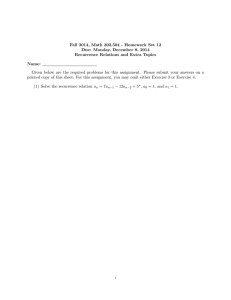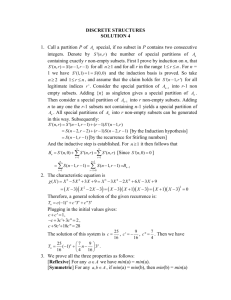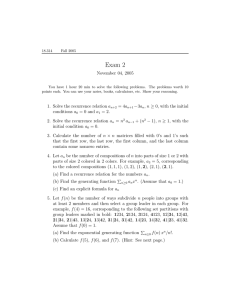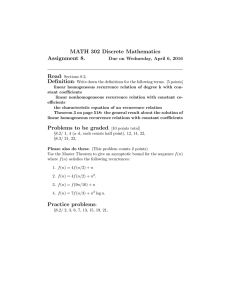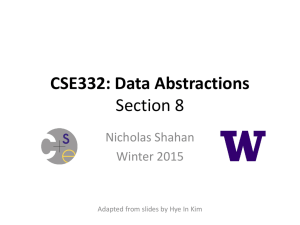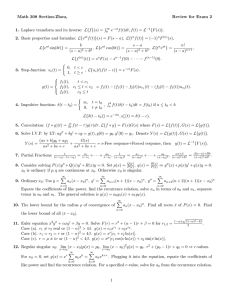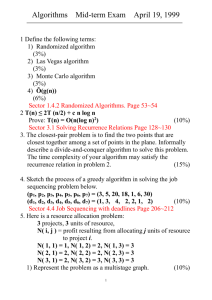18.314 PSET 2 ANSWER KEY, GRADING CRITERIA
advertisement
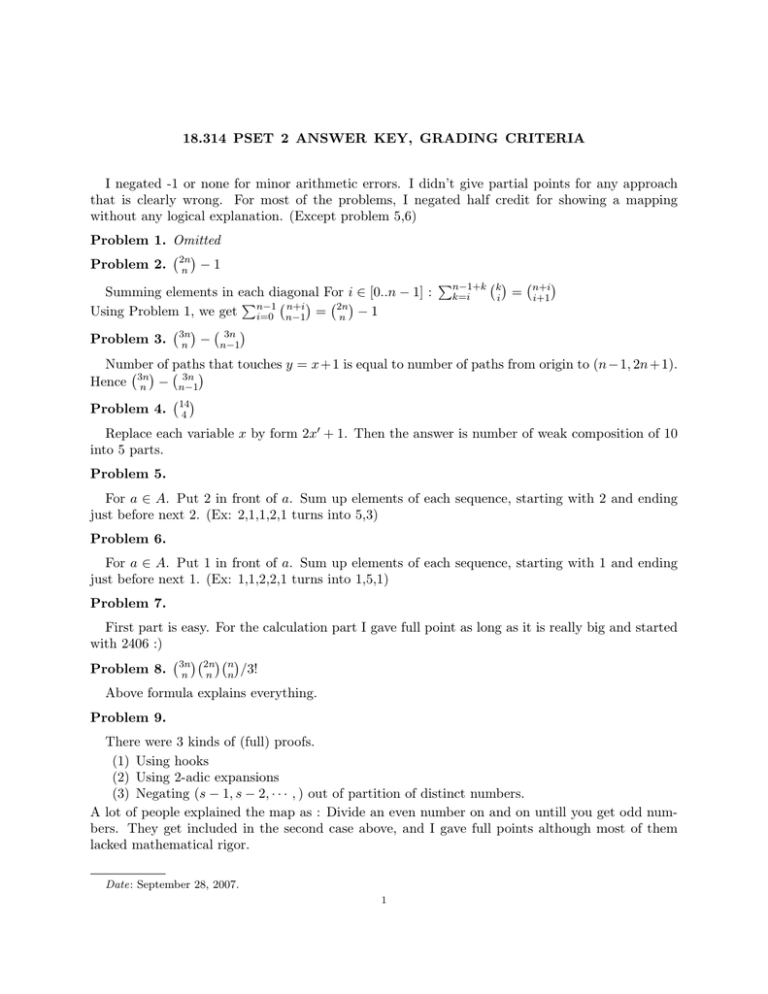
18.314 PSET 2 ANSWER KEY, GRADING CRITERIA I negated -1 or none for minor arithmetic errors. I didn’t give partial points for any approach that is clearly wrong. For most of the problems, I negated half credit for showing a mapping without any logical explanation. (Except problem 5,6) Problem 1. Omitted Problem 2. 2n n −1 Summing elements in each diagonal For i ∈ [0..n − 1] : P n+i 2n Using Problem 1, we get n−1 i=0 n−1 = n − 1 3n Problem 3. 3n n − n−1 Pn−1+k k=i k i = n+i i+1 Number of paths that touches y = x + 1 is equal to number of paths from origin to (n − 1, 2n + 1). 3n Hence 3n n − n−1 Problem 4. 14 4 Replace each variable x by form 2x0 + 1. Then the answer is number of weak composition of 10 into 5 parts. Problem 5. For a ∈ A. Put 2 in front of a. Sum up elements of each sequence, starting with 2 and ending just before next 2. (Ex: 2,1,1,2,1 turns into 5,3) Problem 6. For a ∈ A. Put 1 in front of a. Sum up elements of each sequence, starting with 1 and ending just before next 1. (Ex: 1,1,2,2,1 turns into 1,5,1) Problem 7. First part is easy. For the calculation part I gave full point as long as it is really big and started with 2406 :) 2n n Problem 8. 3n n n n /3! Above formula explains everything. Problem 9. There were 3 kinds of (full) proofs. (1) Using hooks (2) Using 2-adic expansions (3) Negating (s − 1, s − 2, · · · , ) out of partition of distinct numbers. A lot of people explained the map as : Divide an even number on and on untill you get odd numbers. They get included in the second case above, and I gave full points although most of them lacked mathematical rigor. Date: September 28, 2007. 1 For partition of n into all distinct parts, n = x1 + x2 · · · + xm xi = 2pi ai , so write n by sums of ai ’s. One can show inverse process is well-defined by using any integer can be uniquely expressed in terms of 2-adic expansion. Problem 10. S(n − 1, k − 1) If you check the recurrence relation for R(n, k), it is same as recurrence relation for S(n−1, k−1). (After putting 1 in first block, there is choice of k-1 blocks for each following elements) Problem 11. Use induction or the combinatorial interpretation that both sides count the number of ways to choose a cycle. E-mail address: suho@mit.edu 2

